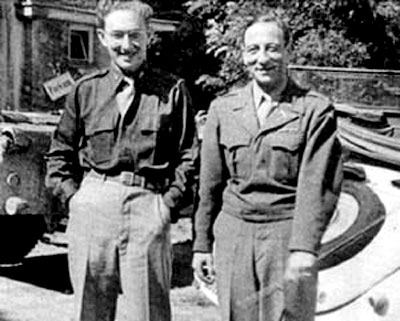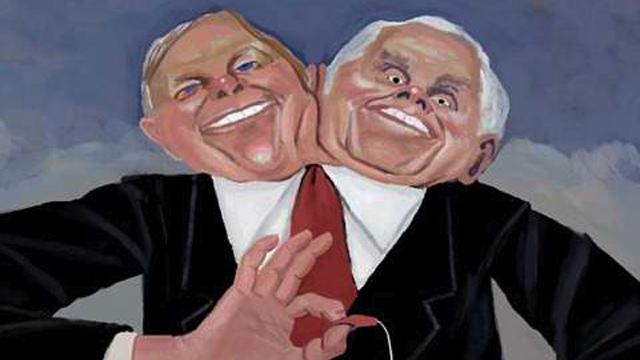Monday, November 02, 2015
vice-chair of the dnc wants to know "what is the policy/what is the mission?"
By
CNu
at
November 02, 2015
0
comments
![]()
Labels: common sense , People Centric Leadership , point source , What IT DO Shawty...
Saturday, October 17, 2015
dyson doesn't believe you're up against it...,
By
CNu
at
October 17, 2015
0
comments
![]()
Labels: Great Filters , point source , Possibilities
Sunday, September 20, 2015
what exxon knew about climate change
By
CNu
at
September 20, 2015
0
comments
![]()
Labels: Great Filters , industrial ecosystems , necropolitics , point source , psychopathocracy
Saturday, September 12, 2015
architect of the new world order

By
CNu
at
September 12, 2015
0
comments
![]()
Labels: Living Memory , point source , The Great Game
Saturday, September 05, 2015
why I left the trembling...,
By
CNu
at
September 05, 2015
0
comments
![]()
Labels: point source , Race and Ethnicity
bibi wants to start shooting stone-throwers...,
The meeting was attended by top security officials, such as Defense Minister Moshe Ya'alon, Public Security Minister Gilad Erdan, Transportation and Intelligence Minister Yisrael Katz, General Security Services head Yoram Cohen, and others.
By
CNu
at
September 05, 2015
0
comments
![]()
Labels: point source , Race and Ethnicity
trembling children taught that goyim are evil...,
By
CNu
at
September 05, 2015
0
comments
![]()
Labels: point source , Race and Ethnicity
Saturday, July 25, 2015
racetards, bibtards, the god of the stupid - useful idiocy in service to hardcore racist elites...,
By
CNu
at
July 25, 2015
6
comments
![]()
Labels: Deep State , Living Memory , N-1 , point source , psychopathocracy , Race and Ethnicity , Tard Bidnis
Monday, December 22, 2014
necropolitics: the flower of american womanhood revealed (that was quick)
By
CNu
at
December 22, 2014
2
comments
![]()
Labels: point source , psychopathocracy , shameless
Tuesday, August 19, 2014
recall the burning man of tunisia bouazizi?
By
CNu
at
August 19, 2014
0
comments
![]()
Labels: point source , quorum sensing?
Wednesday, March 26, 2014
captain trips: the phenomenal power of singular personality...,
By
CNu
at
March 26, 2014
3
comments
![]()
Labels: alkahest , History's Mysteries , Living Memory , point source
Saturday, July 13, 2013
RIP - insatiable curiosity...,
Dr. Bose received his bachelor’s degree, master’s degree and doctorate from MIT, all in electrical engineering. He was asked to join the faculty in 1956, and he accepted with the intention of teaching for no more than two years. He continued as a member of the MIT faculty until 2001.
During his long tenure at MIT, Dr. Bose made his mark both in research and in teaching. In 1956, he started a research program in physical acoustics and psychoacoustics: This led to his development of many patents in acoustics, electronics, nonlinear systems and communication theory.
Throughout his career, he was cited for excellent teaching. In a 1969 letter to the faculty, then-dean of the School of Engineering R. L. Bisplinghoff wrote, “Dr. Bose is known and respected as one of M.I.T.’s great teachers and for his imaginative and forceful research in the areas of acoustics, loudspeaker design, two-state amplifier-modulators, and nonlinear systems.”
Paul Penfield Jr., professor emeritus of electrical engineering, was a colleague of Dr. Bose, and he recalls what made Dr. Bose different. “Amar was personally creative,” he said, “but unlike so many other creative people, he was also introspective. He could understand and explain his own thinking processes and offer them as guides to others. I’ve seen him do this for several engineering and management problems. At some deep level, that is what teaching is really all about. Perhaps that helps explain why he was such a beloved teacher.”
By
CNu
at
July 13, 2013
3
comments
![]()
Labels: American Original , elite , point source
Tuesday, June 25, 2013
healthy and safe, whereabouts unknown...,
By
CNu
at
June 25, 2013
1 comments
![]()
Labels: information anarchy , micro-insurgencies , point source
Tuesday, June 11, 2013
somebody very sophisticated has scripted Snowden's exit strategy...,
 |
| The Motch Brothers |
Simon Young, director of the Centre for Comparative and Public Law at the University of Hong Kong, told GlobalPost that a decision delivered by Hong Kong's High Court in March of this year required the government to create a new procedure for reviewing asylum applications.
Until the government does this, he said, asylum seekers are allowed to stay in Hong Kong indefinitely. "We’re still waiting to hear from government how they are going to implement this decision," said Young. "Until that’s the case, you can’t return anyone until the law’s in place."
In other words, should Snowden apply for asylum, then even if the US made a valid extradition request and Hong Kong was willing to comply he could not be deported until the government figured out a new way to review asylum cases — a potentially lengthy process.
Nicholas Bequelin of Human Rights Watch says that any Snowden extradition must be "a long way off" because of this gap in the law. "If it comes to the point where the US does issue a warrant on Snowden, and then passes it over to the Hong Kong authorities, and he decides to fight it, at this point it would be a court case," he told GlobalPost. "And it can be a long court case, going up to the court of final appeals."
By
CNu
at
June 11, 2013
9
comments
![]()
Labels: point source , Possibilities
Wednesday, June 05, 2013
no wonder these bankster beehotches fear and despise bitcoin...,
By
CNu
at
June 05, 2013
11
comments
![]()
Labels: People Centric Leadership , point source , Possibilities
Saturday, June 01, 2013
finally, an interesting correlation....,
Read more at: http://medicalxpress.com/news/2013-05-motion-quotient-iq-ability-filter.html#jCp
By
CNu
at
June 01, 2013
3
comments
![]()
Labels: point source , Possibilities , What Now?
Sunday, April 28, 2013
that neural default mode network again...,
By
CNu
at
April 28, 2013
0
comments
![]()
Labels: essence , point source , Possibilities
Saturday, April 27, 2013
when do babies become conscious?
By
CNu
at
April 27, 2013
5
comments
![]()
Labels: essence , point source , Possibilities
Friday, April 19, 2013
measuring consciousness?
By
CNu
at
April 19, 2013
1 comments
![]()
Labels: essence , point source , Possibilities
Wednesday, April 18, 2012
political divides begin in the brain
 NewScientist | JOHN HIBBING used to be a traditional political scientist. He studied elections, ran opinion polls and researched why some politicians opt to retire rather than wait around to be defeated by challengers. "About as traditional as it gets," he says.
NewScientist | JOHN HIBBING used to be a traditional political scientist. He studied elections, ran opinion polls and researched why some politicians opt to retire rather than wait around to be defeated by challengers. "About as traditional as it gets," he says.Roughly a decade ago, though, Hibbing shifted to a new approach that is starting to revolutionise how we think about politics. He began to explore whether political preferences might be partly based in biology. The idea initially met with great scepticism from his peers. But Hibbing and his collaborators at the Political Physiology Lab at the University of Nebraska-Lincoln now have a stack of scientific publications backing the idea.
For example, when they measure the physical reactions of liberals and conservatives to aversive stimuli, they find major differences. Tough-on-crime, pro-military conservatives have a more pronounced startle reflex after hearing a sudden loud noise. They also show stronger skin responses when shown threatening images and look at them more rapidly and for longer.
It is conventional to think about political ideology as a set of ideas people consciously hold about the way society should be ordered. A tacit assumption is that we come to these beliefs rationally, by reading and thinking about the issues. If we differ, it is because we reason to different conclusions.
Hibbing's results suggest otherwise. "One of the things we're trying to get people to realise is that those who disagree with them politically really do experience the world in a different fashion," he says.
Many other seemingly apolitical differences between liberals and conservatives have also been discovered. For example, they tend to organise their living spaces differently, with conservatives favouring tidiness and conventionality, and liberals more tolerant of clutter. They also seem to have different art preferences and even senses of humour.
Most recently, and controversially, focus has shifted to differences in brain structures and functions. In one experiment, conservatives on average had a larger right amygdala, a region of the brain that processes responses to fear and threat. Liberals, in contrast, had more grey matter in the anterior cingulate cortex, an error-detecting region that is thought to be involved in causing us to stop repeated patterns of behaviour and change course.
By
CNu
at
April 18, 2012
0
comments
![]()
Labels: killer-ape , partisan , point source
The Weaponization Of Safety As A Way To Criminalize Students
Slate | What do you mean by the “weaponization of safety”? The language is about wanting to make Jewish students feel saf...

-
theatlantic | The Ku Klux Klan, Ronald Reagan, and, for most of its history, the NRA all worked to control guns. The Founding Fathers...
-
Video - John Marco Allegro in an interview with Van Kooten & De Bie. TSMATC | Describing the growth of the mushroom ( boletos), P...
-
Farmer Scrub | We've just completed one full year of weighing and recording everything we harvest from the yard. I've uploaded a s...






